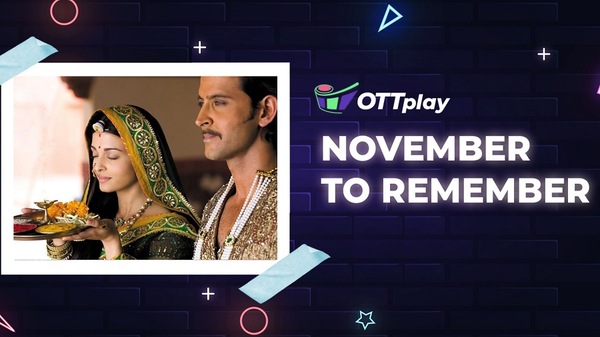November to Remember: Ashutosh Gowariker's film Jodhaa Akbar presents a great example of religious harmony
The film features Hrithik Roshan, Aishwarya Bachchan and Sonu Sood in important roles.

Last Updated: 05.01 PM, Nov 15, 2021
Ashutosh Gowariker's film Jodhaa Akbar is considered one of the epic films, for its larger-than-life images, cinematography and splendid visuals. The period drama set in the 16th century has beautifully portrayed ancient traditions, large armies of humans and elephants and huge towering forts, depicting life back in the 1500s.
At a testing time when the country is dealing with intolerance, let's look at the reasons how the 2008 film Jodhaa Akbar presents a great example of love and religious harmony. The film presents a love story that transcends all barriers - religion and culture.
The marriage of the Rajput princess Jodhaa, as she is addressed in the film, to Jalaluddin Muhammad Akbar marked the beginning of the Mughal-Rajput alliance. However, Jodhaa continued to practice Hinduism. The emperor allowed her to follow her rituals and also build a temple in the royal palaces in Agra and Fatehpur Sikri. Akbar is said to have never converted any of his Hindu wives and allowed them the freedom to perform and respected their rituals in the palace. He is said to have occasionally participated in them too. He wanted to be the king of all people - Muslims and Hindus.
The film also has quite accurately depicted how Jodhaa Bai led to a shift in the social policies of the Mughal emperor. Jodha is considered widely for Mughal's tolerance of religious differences and inclusive policies, which is much needed in today's times. The wife of the third Mughal emperor Akbar, Mariam-uz-Zamani was often referred to as Jodha Bai, Hira Kunwari and Harkha Bai. The name Jodha Bai is said to have been first used to refer to Mariam-uz-Zamani in Annals and Antiquities of Rajasthan by James Tod written in the early 19th century. However, her birth name is still unknown.
Hailing from a Hindu Rajput family, as shown in the film, her marriage to Akbar was a political decision and served as the submission of her father to the Mughal emperor in 1562. She was, in fact, conferred upon the title of Mariam-uz-Zamani after she gave birth to Jahangir. But many Rajput groups claim that Jodhaa was married to Jahangir, Akbar's son and not Akbar.

Mariam-uz-Zamani got more prominence during her son's reign. She looked after the ministry of foreign trade and held an important position in the Mughal court. She had the authority to sign official papers. Such power and authority were only later enjoyed by her daughter-in-law Noor Jahan. The story of the kingdom also sets an example of women empowerment and gender equality.
The film definitely was not easy to pull off and was made on a large budget. The set in Karjat where certain interiors of Ajmer were built cost the team reportedly Rs 12 crore. The set for the magnum opus was designed by Nitin Desai who took lakhs of pictures of Agra and Jaipur for research and to rebuild the palaces. No wonder why the film is still considered noteworthy when it comes to the depiction of the Mughal era in mass media since the time of our independence.

